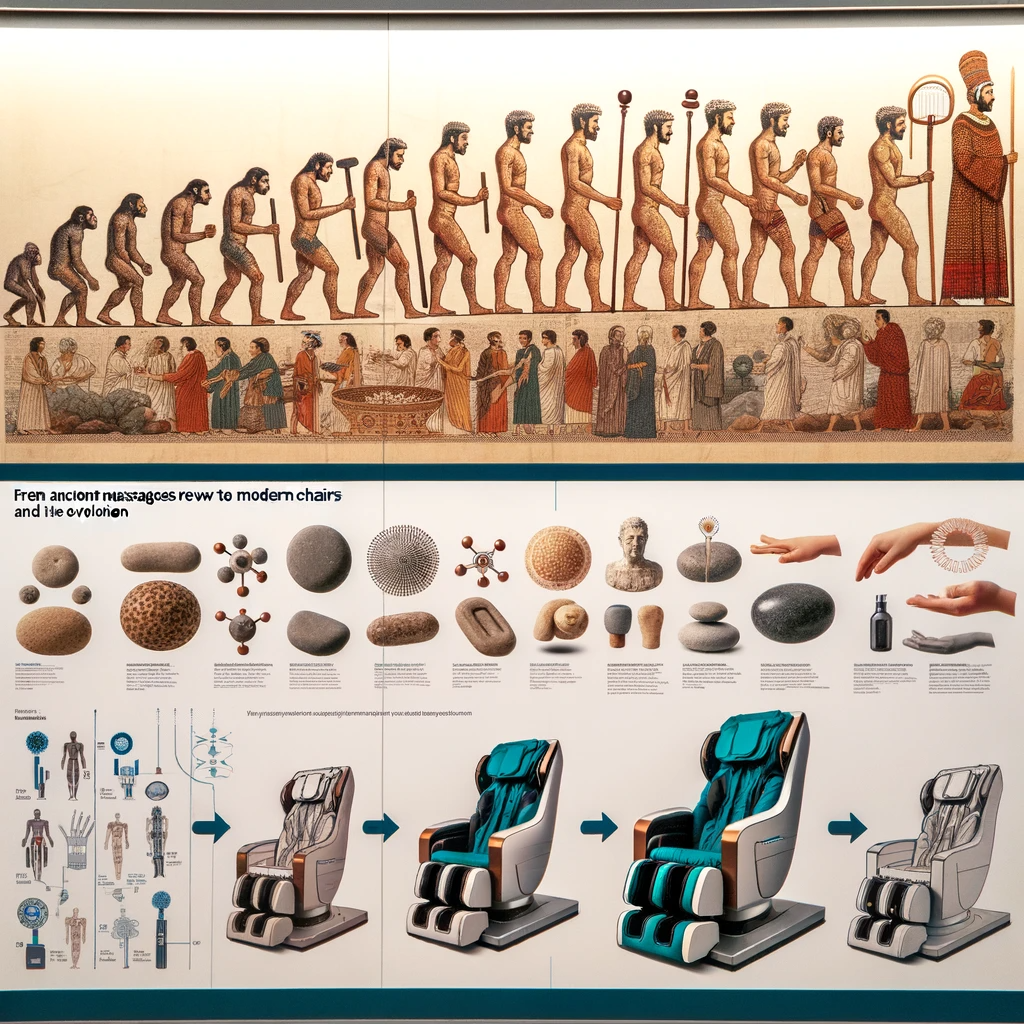Massages, a therapeutic ritual since ancient civilizations, have seamlessly adapted into our modern lives, especially with the advent of massage chairs. But how massage chairs work in delivering those age-old benefits in a matter of minutes? This journey will take us from age-old techniques to the technological marvels of today.

The Genesis: Manual Massage Techniques of Old
Dating back over 5000 years, civilizations like China, India, and Egypt practiced manual massage techniques. Using hands, stones, and herbs, therapists would manipulate muscles and tissue, alleviating pain and promoting wellness. These were the precursors to many of the massage types we recognize today, from Shiatsu to Swedish.
The Birth of Chair Massages
In the 1980s, David Palmer, often referred to as the “Father of Chair Massage,” introduced a more structured approach to seated massages. Initially done on regular chairs, these sessions focused on quick, rejuvenating massages, particularly for the upper body, making them popular in corporate settings and public spaces.
The Dawn of Mechanical Assistance
As technology progressed, inventors and innovators saw an opportunity to combine the ancient art of massage with modern mechanics. The earliest massage chairs were rudimentary, offering basic vibratory functions. However, they paved the way for the sophisticated models we see today.
The Modern Marvel: Today’s Massage Chairs
Today’s massage chairs are feats of engineering, integrating sensors, motors, rollers, and airbags to simulate the hands of a trained masseuse. They incorporate:
- Body Scanning Tech: To tailor the massage to individual needs.
- 3D Rollers: Mimicking human touch, moving in multiple dimensions.
- Heat Pads: Offering therapeutic warmth, especially to the lumbar region.
- Zero Gravity Positioning: Enhancing the depth and effectiveness of the massage.
From Tradition to Technology: The Evolution in Techniques
The essence of ancient massages, be it the rhythmic tapping reminiscent of Tapotement in Swedish massage or the deep kneading echoing Shiatsu practices, are embedded in the chair’s programming. Hence, a 15-minute session in a modern chair can encompass techniques passed down through millennia.
The Future: Beyond Just Massage
As technology continues to advance, so does the scope of what a massage chair can offer. We’re now seeing models that integrate mood lighting, aromatherapy, and even AI-driven adaptive massage techniques. The future might even bring in Virtual Reality or Augmented Reality experiences to transport users to serene landscapes as they get massaged.
Conclusion
The journey of massage chairs, from the hands of ancient therapists to the robotic arms of modern machines, is a testament to humanity’s quest for relaxation and well-being. It’s a beautiful confluence of honoring age-old traditions while embracing the innovations of the present. As we recline in these modern marvels, it’s fascinating to think of the centuries of history and progress that cradle us.